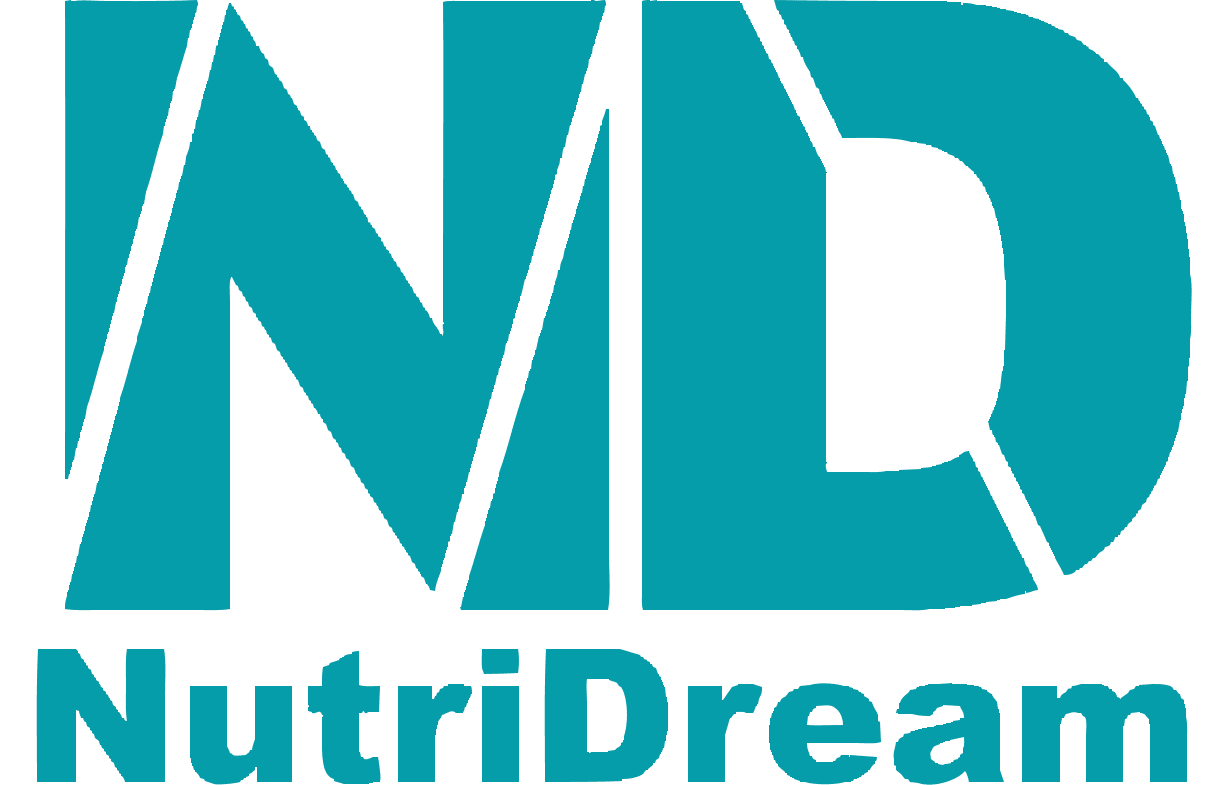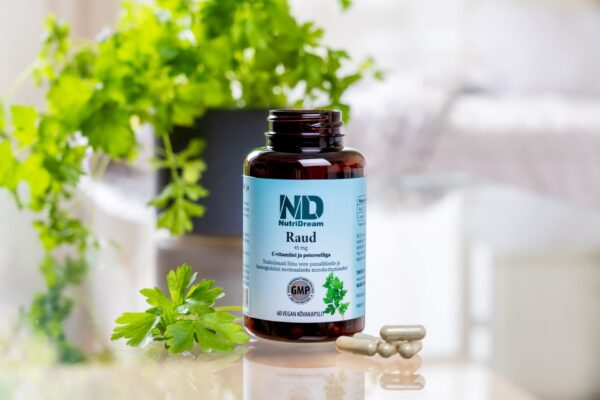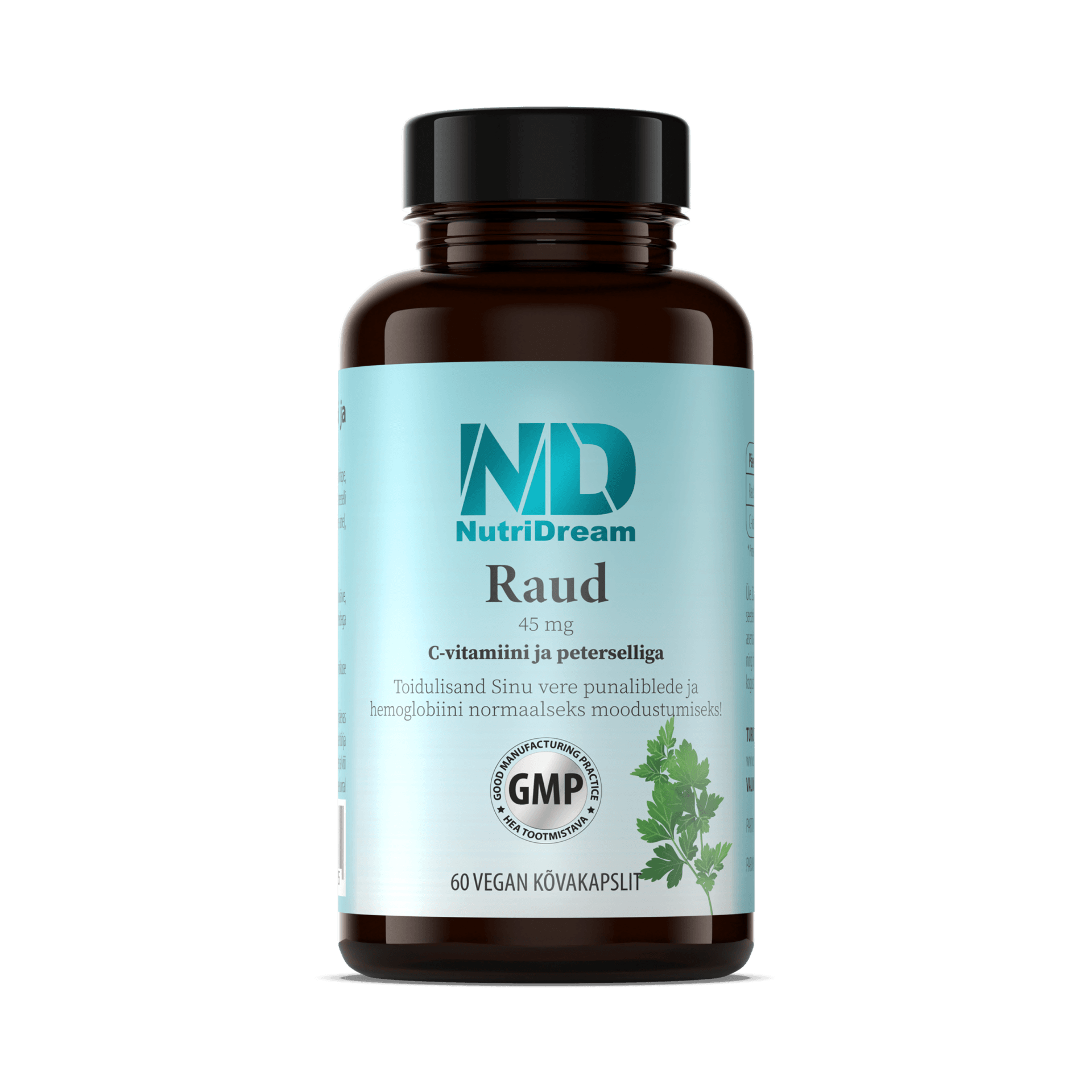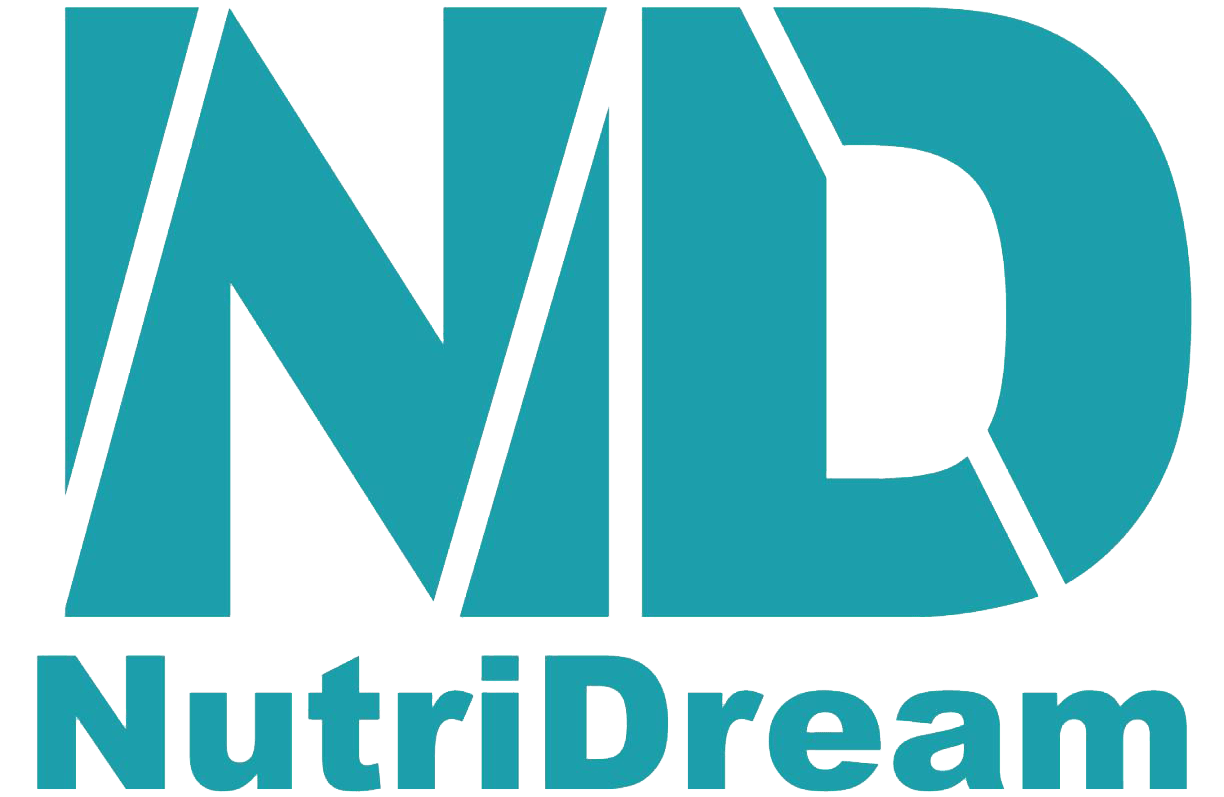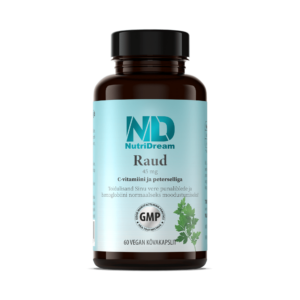What is iron? Why is it important for our body?
Iron is a vital micromineral that participates in the function of biomolecules. Iron supports the normal formation of red blood cells and hemoglobin and the transport of oxygen in the body. Iron also helps reduce fatigue and exhaustion.
Iron is present in the body in bound or free form. Iron is only good for the body in a carefully bound form. In contrast, free form iron acts as a strong prooxidant and is oxidized to toxic compounds that are sparingly soluble in the body.
The recommended daily amount of iron depends on age, physical activity and physiological condition. It is usually in the range of 10 to 15 mg.
Who should consume iron?
In general, iron deficiency does not occur in people who consume mixed foods, as iron is found in many foods. The largest sources are liver, eggs and red meat. From plant-based foods beans, parsley, raisins and lentils. Iron deficiency can be caused by an unbalanced diet, veganism, decreased absorption, prolonged bleeding and uncompensated needs (e.g., in pregnant women).
Symptoms of iron deficiency are usually pale skin, tiredness, dizziness and irritability, but nail brittleness and spoon-shaped fingernails may also occur.
It is worth remembering that iron supplements should definitely not be used arbitrarily. If iron deficiency is suspected, you should always consult a doctor, who will determine the amount of iron in your blood by doing blood tests. It is also wise to ask your pharmacist for advice on choosing the right formulation.
Iron is an essential micromineral for us, but it must not be forgotten that excess iron can become toxic to the body and contribute to many other diseases.
Many minerals are produced in inorganic forms (e.g., oxides, carbonates, sulphates), which are absorbed by the body less than organic ones. Good absorption of organic forms is the basis for better bioavailability (indicating how much of the substance enters the bloodstream) and lower intensity of side effects (Figure 1). Depending on the salt form, unabsorbed iron can cause diarrhea or constipation, abdominal pain, nausea, vomiting, dark stools, or even heartburn.
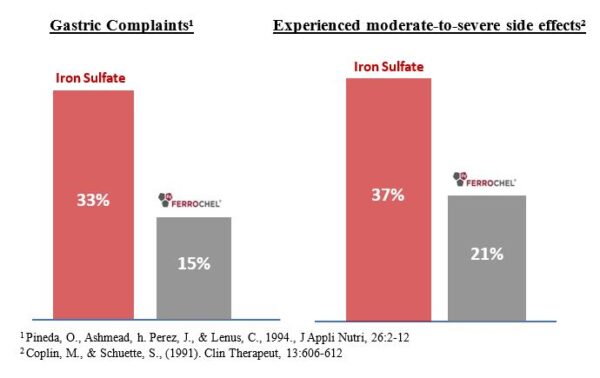
Which iron form and preparation to choose?
How to take iron? What affects the absorption of iron?
Iron is usually taken orally, either daily or every other day. The correct frequency of taking will be determined by your doctor or pharmacist, depending on the dose of iron required, the rate of absorption and the side effects.
Organic salt forms are four times better absorbed than inorganic ones (Figure 2), ensuring good bioavailability and a lower side effect profile.

Why is NutriDream iron good?
NutriDream uses Albion® patented iron diglycinate (Ferrochel®), the quality of which has been recognized by the European Food Safety Authority (EFSA). Ferrochel ™ is in the form of a chelate in which iron is linked to two amino acids, resulting in the formation of iron diglycinate (Figure 3). The amino acid glycine easily crosses the intestinal wall, resulting in good absorption of iron diglycinate and less gastrointestinal disturbances.

Vitamin C has also been added to the product to promote the absorption of iron. Ascorbic acid is a good antioxidant and, like iron, helps reduce fatigue. As a natural component, we have also added parsley which has been grown and dried in Estonia. Parsley (Petroselinum crispum) is a biennial herb that is primarily known as a herb. In its composition, parsley is rich in vitamins C, K and A and minerals calcium, iron, magnesium and folate.
The article is based on the following sources.
- Xiao, Q. et al. (2020). Mechanism and intervention measures of iron side effects on the intestine. – Critical Reviews in Food Science and Nutrition, 60(12), 2113–2125.
- Stoffel, N. U. et al. (2020). Iron absorption from supplements is greater with alternate day than with consecutive day dosing in iron-deficient anemic women. – Haematologica, 105(5), 1232–1239.
- Bovell-Benjamin, A. C. et al. (2000). Iron absorption from ferrous bisglycinate and ferric trisglycinate in whole maize is regulated by iron status. – The American Journal of Clinical Nutrition, 71(6), 1563–1569.
- Milman, N. et al. (2014). Ferrous bisglycinate 25 mg iron is as effective as ferrous sulfate 50 mg iron in the prophylaxis of iron deficiency and anemia during pregnancy in a randomized trial. – Journal of Perinatal Medicine, 42(2), 197–206.
- Abbaspour N. et al. (2014). Review on iron and its importance for human health. – Journal of Research in Medical Sciences, 19(2), 164–174.
- Omena, J. et al. (2021). The effect of food and nutrients on iron overload: What do we know so far? – European Journal of Clinical Nutrition.
- Herbs: Composition and dietary importance (2006). – Encyclopedia of food and health. Academic Press, 332–337.
- Zilmer, M. et al. (2015). Inimkeha põhilised biomolekulid (meditsiiniliselt tähtsamad ülesanded). Inimorganismi metabolism (biokemism ja kliinilised aspektid). Tartu: Tartu Ülikool.
- Commission Regulation (EU) No 432/2012 establishing a list of health claims accepted by the European Food Safety Authority.
Related Products
-
Supplements
Iron (45 mg) with Vitamin C and Parsley
Rated 5.00 out of 5€ 18,79Original price was: € 18,79.€ 11,30Current price is: € 11,30. Add to cart
